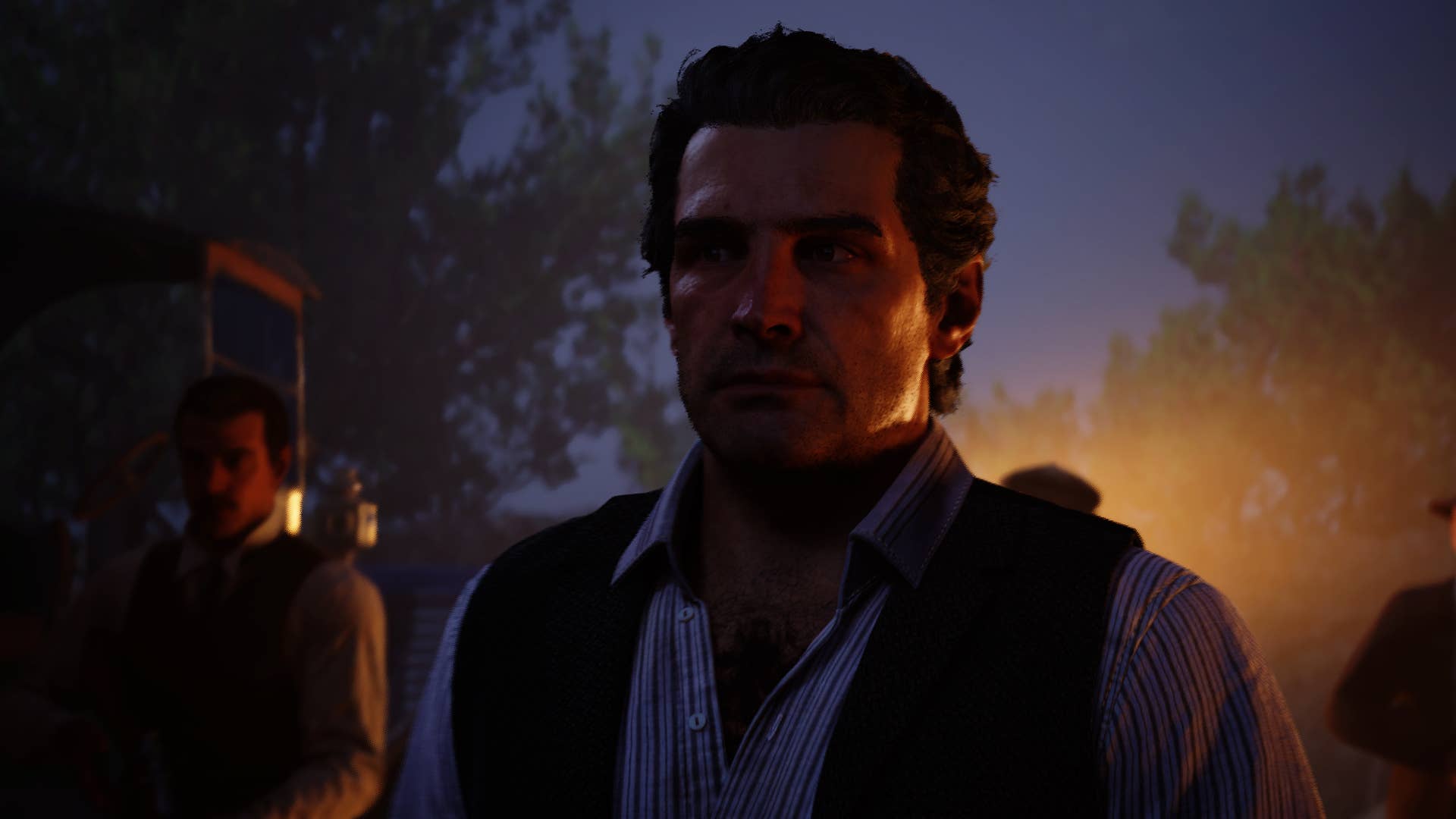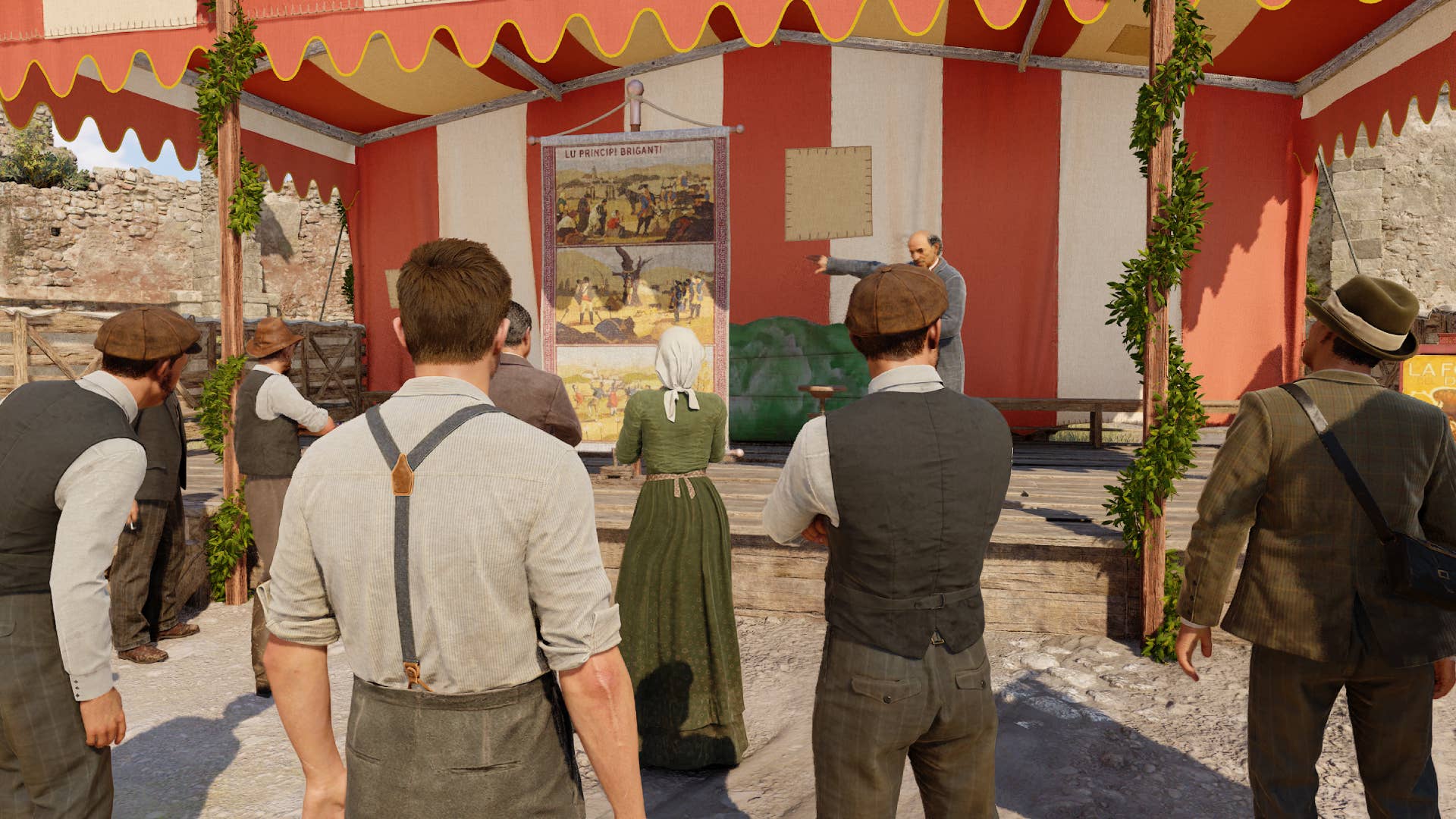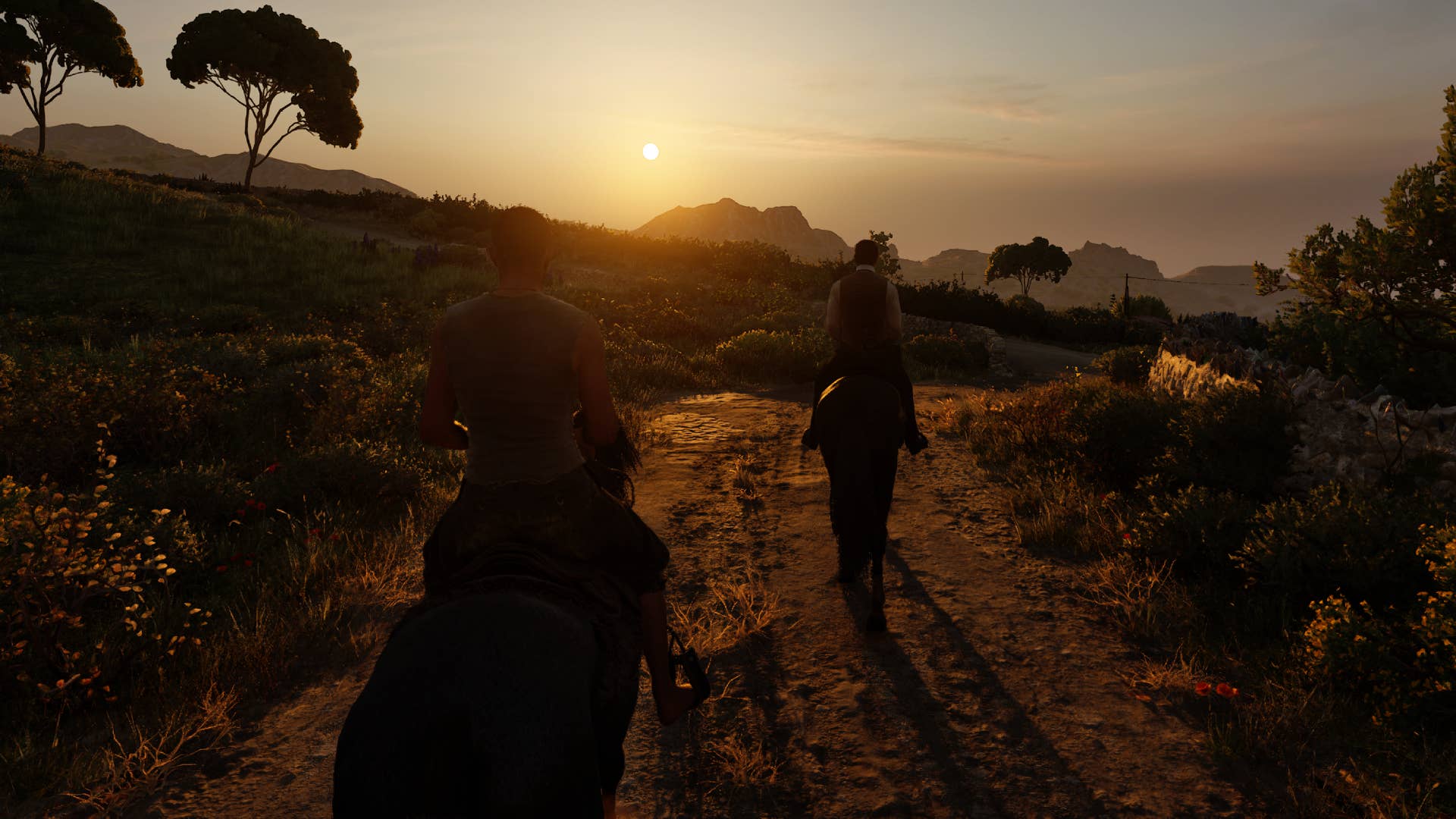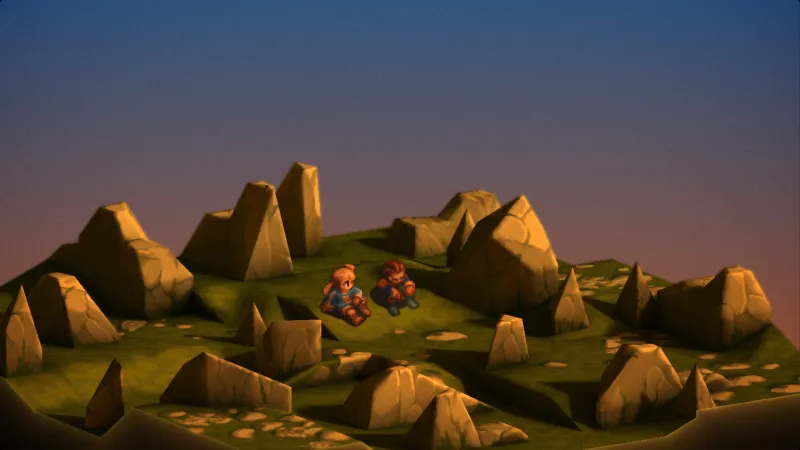The motor carriage noisily trundles down a dirt track in the Sicilian countryside. It’s a beautiful evening or morning. I’ve lost track of which, and I’m too busy thinking to double check whether the pale sun overhead is rising or retreating. How strange it is that something so new (at least in the context it’s being presented) can feel so inescapably ancient. These thoughts are about the impractical and inefficient curiosity Enzo Favara’s at the wheel of, but they’re also about Mafia: The Old Country itself.
If you get a relative or mate who’s unfamiliar with the Mafia series to play Hangar 13’s latest work, I’m fairly convinced that you’ll have an easier time convincing them that they’d just sampled a remaster of a game from the 2000s than a new release from 2025. That’s not a bad thing in and of itself, but at a time when games attempting to draw on nostalgia feel more unrepentantly nostalgic than ever, while new games often feel increasingly desperate to convey their newness, it’s certainly struck me.
The Old Country’s old school, and deliberately so. In response to criticism Mafia 3 got when it came out about a decade ago, the developers have opted not to keep trying to evolve what a Mafia game is with a revised approach, but instead to push back against the inevitable onslaught of time.
The single-player story is the thing, the open world’s little more than a backdrop for it to take place against. You’ll find none of online gubbins or microtransactions that’ve snaked their way into countless series here, for better or often worse. You’ve still got to link your 2K account up in order to access the car with the best stats in the game, but hey, we can’t have everything, right?
The result, however, is that the very linear main plot has to do the overwhelming majority of the heavy lifting in making the game feel worth your time. It does a perfectly average job. Living up to the tagline of the advert for the game I’ve been served 10,000 times on YouTube over the past two weeks, The Old Country is a chance to play through a classic movie. It’s a mob movie you’ve seen before, one whose twists are overtly choreographed or predictable, and whose characters, while performed well, are pale imitations of deeper Dons or more stimulating Sicilians.
Enzo, the protagonist, starts off having been sold into slavery in a Mafia-run sulphur mine. Now a young adult, he’s naturally desperate to escape the treacherous tunnels underneath a literal volcano that’s Mount Etna in all but name. However, once he does, his freedom comes with the caveat of being trapped in the service of another mob clan, the Torrisi family. This being a classic mafia movie, the lad promptly falls head over heels in love with the Don of the family’s daughter, Isabella.

Thus begins a tale told over chapters that take place across multiple in-game years, jumping months at a time from major event to major event between each mission. There’s a palio, a motor race, a christening, and a trip to the opera. There are no weddings or funerals unless you count one that happens off-screen, which is at least one area in which it feels like Hangar 13 have exercised restraint in their desire to emulate The Godfather films. As things progress at a breakneck pace, some of the themes or plot points that could have helped set The Old Country’s tale apart from the inspirations it breathlessly mimics don’t get the focus or examination they deserve.
The alienation Enzo would feel upon suddenly being cast from the dehumanising underground prison of life in the mine, to rubbing shoulders with the privileged amid the dream-like Mediterranean vibrance of the Dorata valley. Isabella’s strained relationship with her controlling father, and the nature of what his position demands of a person. There’s some nice interrogation of the toll being locked into criminal organisations takes on families, and how the divide between poor working people and nouveau riche landowners in post-feudal Italy led the mafia to become such a strong institution in places like Sicily.
However, the game’s too desperate to rush you on to its next bit of mechanically unremarkable cover-shooting, stealthing, driving, or riding to slow things down a bit. Part of this is just the nature of what Hangar 13 were going for, with The Old Country designed as a bitesize and highly-focused adventure. That means there’s very little of the bloat that plagues a lot of open-world action games, but also means you only get a tiny smidge of the slice of life the mafia media that inspired The Old Country excels in offering.
It doesn’t paint anywhere near as detailed a picture of a culture, of regular people’s day-to-day lives shackled to the dark and powerful black hole that is ‘our thing’ in the same way that The Godfather or The Sopranos have done, because it’s always desperately trying to funnel you to the next in a train of one-on-one knife fights it’s got set up. That constant rush ensures the game never drags, but also that it doesn’t spend nearly enough time doing the one thing it does best – letting you feel like you’re living in rural early 1900s Sicily. When it does take a breather, you get lovely moments. Stopping to listen to a guy on a stage recount local legends with audible relish. A car full of drunken idiots blasting tunes from a gramophone as it meanders to town, then crawling to a stop so one of them can piss over the side of a bridge while yelling what for at the local populace.

The open world itself is the lone star of the show, clearly designed with care and a sharp eye for capturing the beauty of a fairytale landscape that alternates between serene and rugged. The problem is that in their desire to be old school and pretend Mafia 3 never happened, the devs have squirrelled away letting you openly roam this lovely locale into a separate exploration mode that’s easy to miss out of the gate. Sure, ditch the sandbox stuffed with an unnecessary amount of nagging map markers and pointless shite to manage, but it seems like overkill not to let the player explore a bit without having to back out and load up an entirely different bit of the game.
On one hand, I get it. By modern standards, The Old Country’s open world is pretty static, with a lot of interiors only being accessible during their respective main story missions. The things to do in it are also pretty limited, with aimless roaming being the only alternative running around picking up a handful of collectable items that either help flesh out the setting’s historical context or earn you more cash to spend on gear, rides, or limited customisation options. On the other, not being able to engage with that in a more natural fashion is a shame. You don’t have to feel ashamed of your open world because it’s not brimming with stuff, Mafia!
There’s also the matter of the unstable performance I had at certain points, with a few crashes and regular stuttering, though most of this seemed linked squarely to the transitions between gameplay and cutscenes in story missions. Oh, and there was one point in exploration mode when a cart texture glitched out across the map.

All of this culminates in a paradoxical game that arguably feels more like a 2006 release coming out in 2025 than this year’s actual re-release of a game from 2006. Despite it having an entirely new plot nestled in a world that you’ve never seen before, all of the mechanics and packaging are dated in a manner that feels suffocating to those fresh bits as often as it does a blessing for them.
I respect Hangar 13 for not feeling like they had to join in today’s arms race of ever-balooning open world/action things and sticking to their stated principles in doing so. Though, I think the manner in which they’ve executed that vision has its eyes too firmly glued to the rear view mirror. This isn’t a game that pulls the best bits from how things were done back in the day and melds that with positive innovations developed since that point to create a middle ground that could represent a better way forwards. The Old Country feels stuck in the past.
Source link
